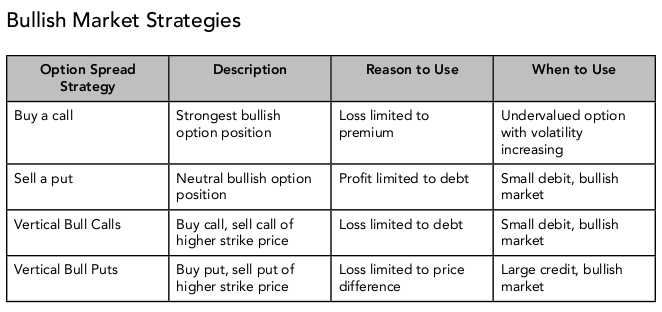Introduction:
Delving into the world of options trading can be likened to entering a labyrinth of numerous paths, each leading to distinct investment opportunities and potential rewards. Options, financial instruments that confer rights rather than obligations, possess the inherent ability to amplify profits and mitigate risks within a varied range of trading strategies. Understanding the intricacies of options trading is paramount to unlocking this realm of possibilities and harnessing its full potential for financial success.

Image: s3.amazonaws.com
Options empower investors with the flexibility to speculate on future price movements of underlying assets, which can range from stocks and bonds to commodities and currencies. The essence of an option contract lies in its provision of two fundamental rights: the right to buy (a call option) or the right to sell (a put option) a specific quantity of the underlying asset at a predetermined price on or before a defined date. This flexibility allows traders to tailor strategies based on their unique objectives and risk tolerance.
Options Trading Strategies Unveiled:
Embarking on the exploration of options trading strategies unveils a diverse landscape of tactics employed by astute investors. Each strategy is meticulously crafted to capitalize on specific market conditions and risk profiles, and a comprehensive understanding of their nuances is crucial for successful implementation. Here, we present an in-depth exploration of several widely employed options trading strategies:
Covered Call Strategy:
The covered call strategy combines the holding of an underlying stock with the selling of a call option against that same stock. This strategy is tailored for investors who anticipate moderate appreciation in the underlying asset’s price while seeking additional income generation through option premiums. By selling the call option, the investor receives a premium in exchange for granting another party the right to buy their shares at a specified price. However, if the underlying asset’s price rises above the strike price, the investor is obligated to sell their shares at the predetermined price, potentially limiting potential profits.
Protective Put Strategy:
The protective put strategy encompasses purchasing a put option to hedge against potential losses in the underlying asset’s value. This strategy suits investors who own the underlying asset and seek to minimize downside risk. By purchasing the put option, the investor secures the right to sell the underlying asset at a specific price, ensuring a minimum selling price even if the market value declines. However, implementing this strategy entails paying a premium for the put option, which represents the cost of protection against potential losses.
Image: www.hoteldarshanpor.com
Collar Strategy:
The collar strategy involves a combination of buying a protective put and selling a covered call on the same underlying asset. This strategy aims to limit both the upside and downside potential of the underlying asset while still generating income through the sale of the call option. By constructing a price range around the current market value, the collar strategy mitigates extreme price fluctuations and offers a more moderate return profile.
Real-World Examples:
To solidify the practical application of options trading strategies, let’s consider the following real-world scenarios:
Example 1:
An investor holding 100 shares of Apple stock at $150 per share decides to generate additional income through a covered call strategy. They sell one call option with a strike price of $155 and a one-month expiration date for a premium of $2 per share. If the stock price remains below $155 at expiration, the investor retains their shares and collects the option premium as income. However, if the stock price rises above $155, they are obligated to sell their shares at that price, limiting their potential profit.
Example 2:
An investor concerned about a potential decline in the value of their Tesla stock holding decides to implement a protective put strategy. They purchase one put option with a strike price of $200 and a one-month expiration date for a premium of $5 per share. Should the stock price drop below $200 at expiration, the investor has the right to sell their shares at the strike price, mitigating potential losses. However, if the stock price remains above $200, the put option expires worthless, and the investor forfeits the premium paid.
Option Trading Strategies With Examples

Image: ar.inspiredpencil.com
Conclusion:
The captivating realm of options trading offers a diverse array of strategies tailored to meet the nuanced investment objectives and risk profiles of traders. By comprehending the fundamentals of options trading and mastering the art of selecting and implementing appropriate strategies, investors can amplify profits, manage risk, and navigate market volatility with greater confidence. Whether seeking income generation, capital preservation, or speculative gains, options trading provides a fertile ground for astute investors to cultivate financial success.






